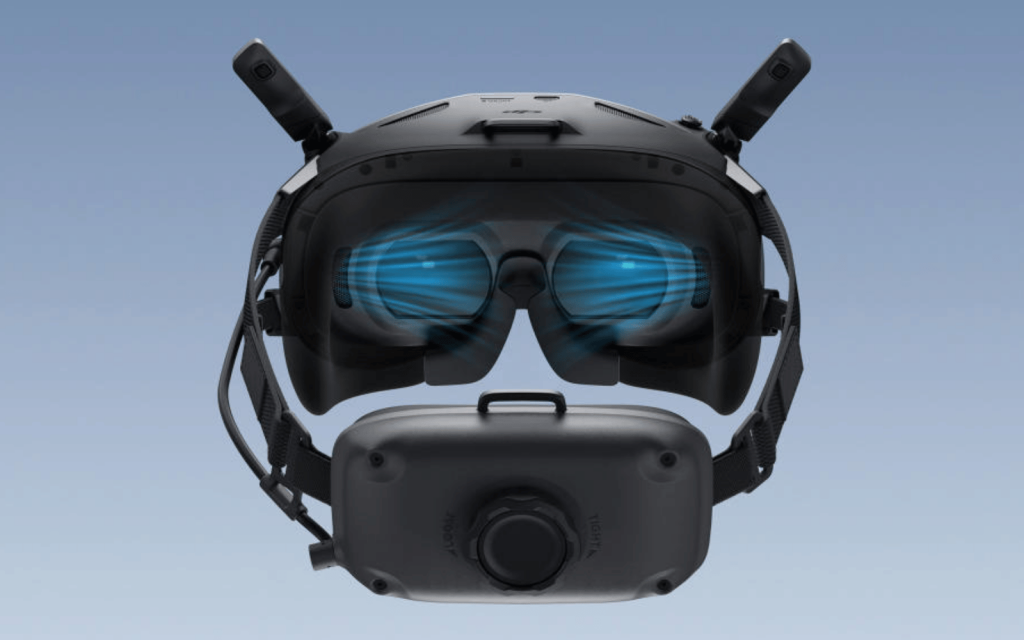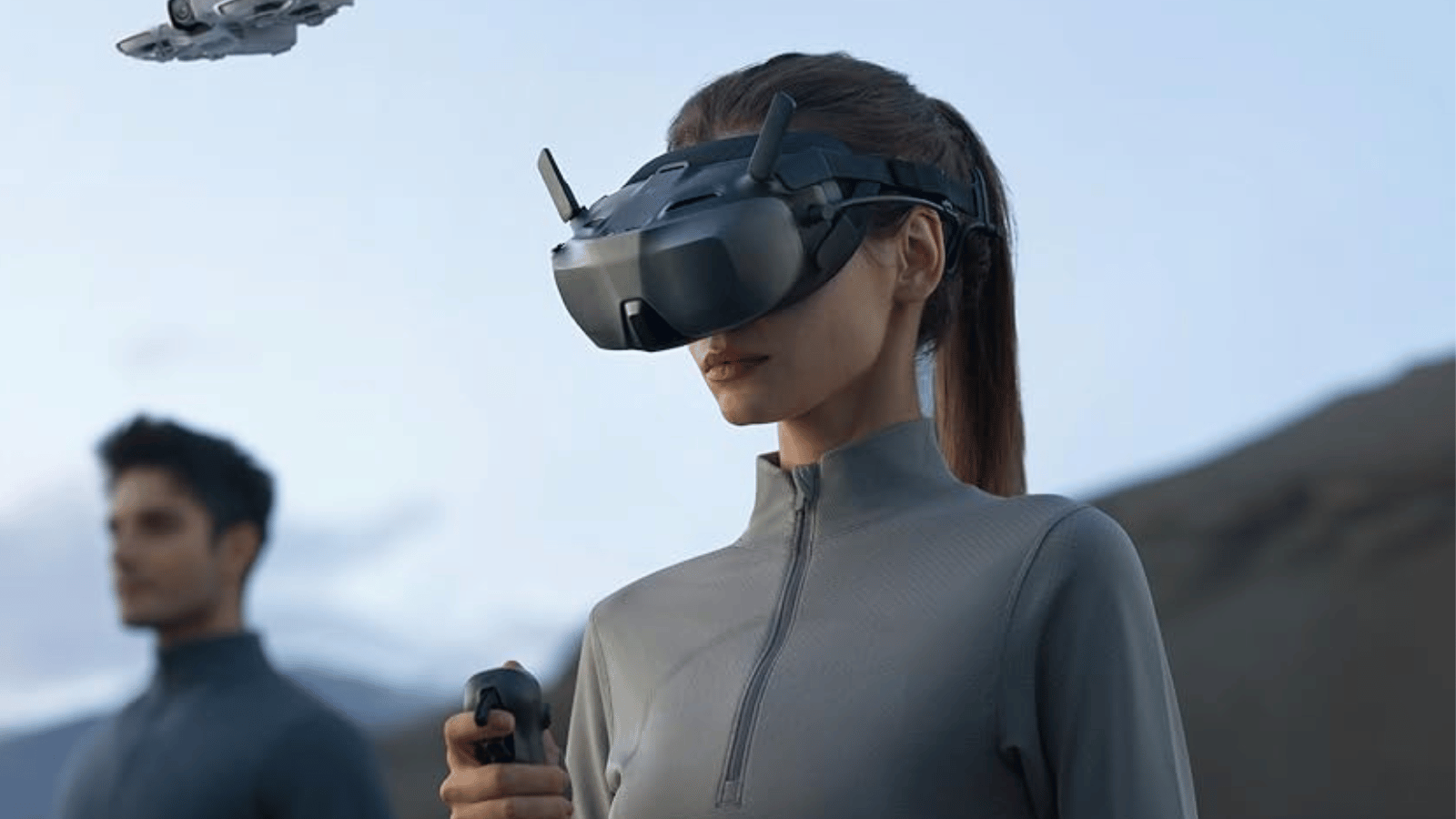DJI is releasing the sequel to its much-complained-about Goggles 3. The Goggles N3 improve upon the older design with a larger, lighter, and more comfortable design. While the Goggles N3 are a significant ergonomic improvement, there is a tradeoff in screen quality from OLED to LED.
DJI Goggles N3
The DJI Goggles 3’s lack of padding and awkward weight distribution made it notoriously uncomfortable. The Goggles N3 resolves this issue with a larger yet lighter frame, with two straps securing the goggles in place. The larger size also means users don’t have to remove their glasses while using them and can continue to use any specialised lenses for eye ailments if needed.
Users get a 1080p display with a wider field of view than the previous model, from 44° to 54°. Image quality is a downgrade as the goggles step from two Micro-OLED screens to a single LED. DJI‘s O4 transmission system boosts the Goggles N3 with a bitrate of up to 60 Mbps. Live feed can only be shared via USB-C. Oddly there’s no Wi-Fi support for that. The integrated battery allows for just under three hours of screentime, and you can use it only on the DJIs Neo and Avata 2. The Goggles 3 only work with the DJI Air 3 and Mini Pro.
Notable features include compatibility with the RC Motion 3 or FPV Remote Controller 3, head tracking for camera control, and an augmented reality cursor for an intuitive user experience. You can also do power loops, flips, and other tricks with a single button tap. It also adds a one-tap defogging fan, which quickly clears any mist buildup.
Anyone looking to upgrade their DJI FPV drone experience can pre-order the Goggles N3 from DJI and Amazon for about R4,050. Local pricing and availability should be along soon.





